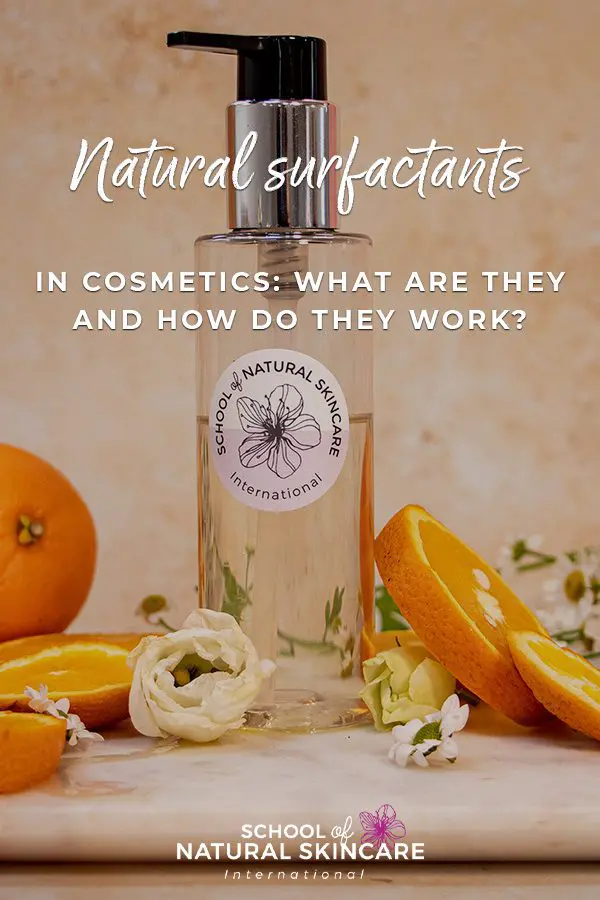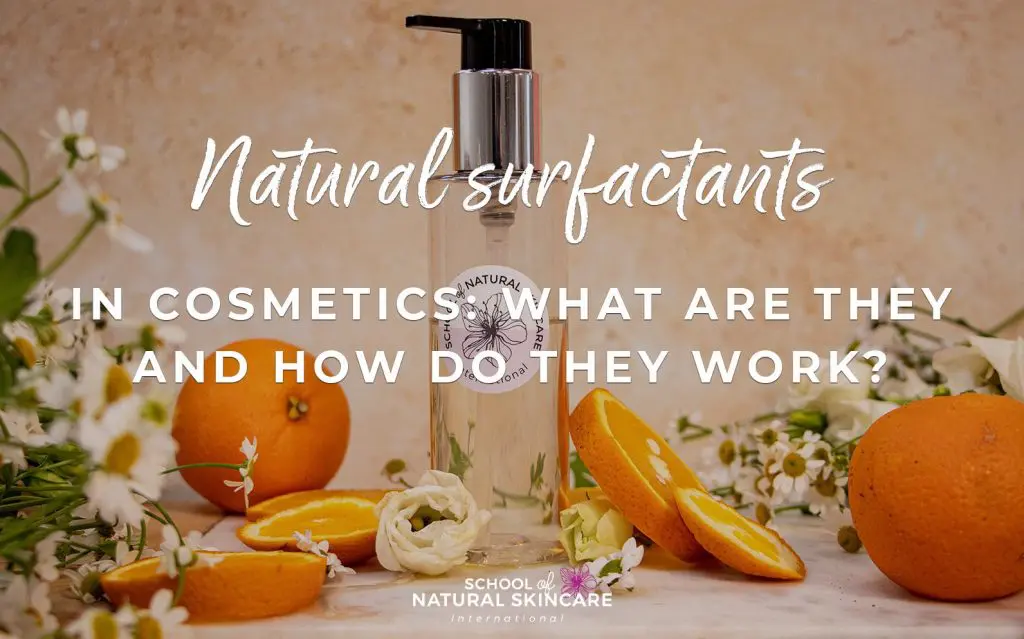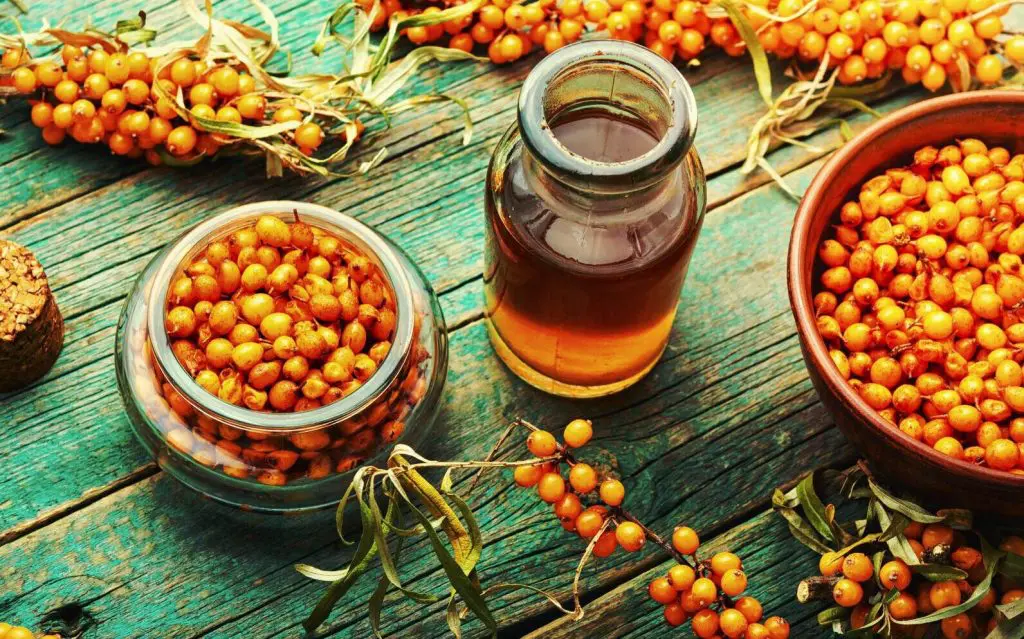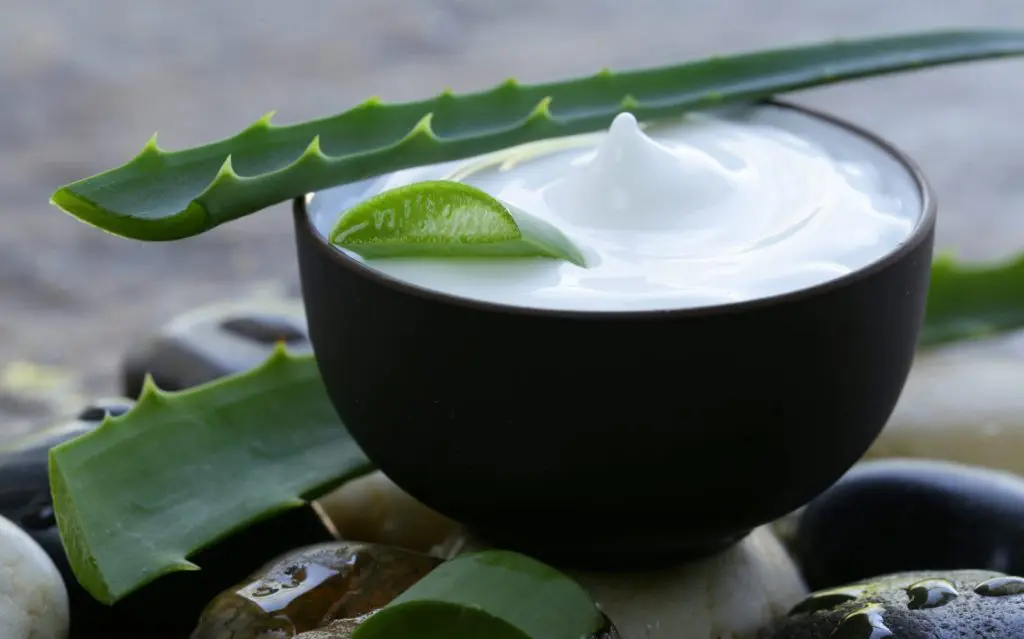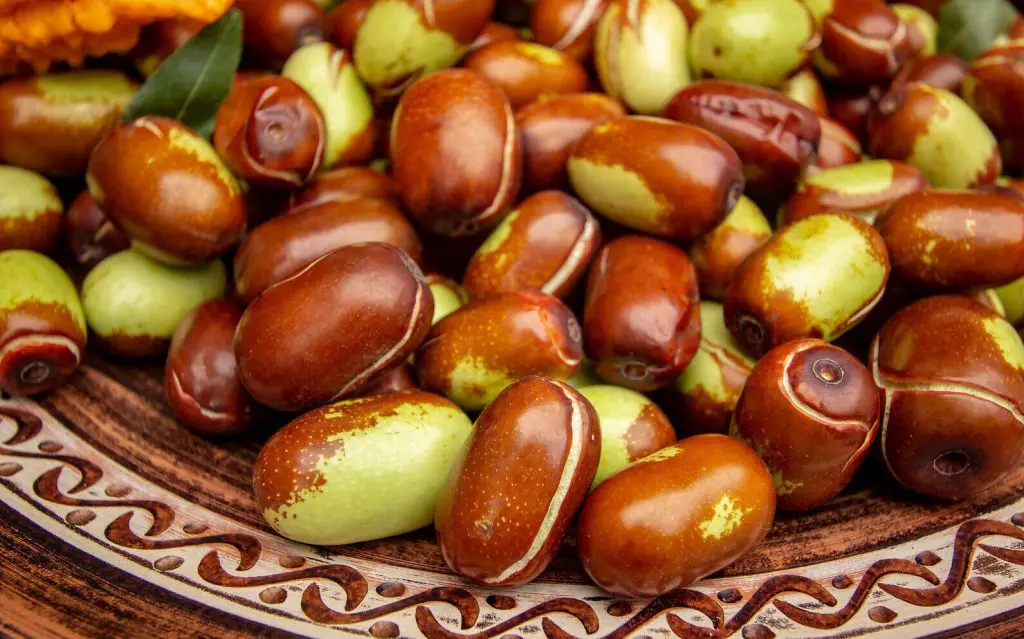Surfactants are an important category of ingredient in cosmetics because they function as detergents which help to remove dirt. They are therefore the basis of many types of cleansing products such as face and body washes, hand wash, bubble bath and shampoo.
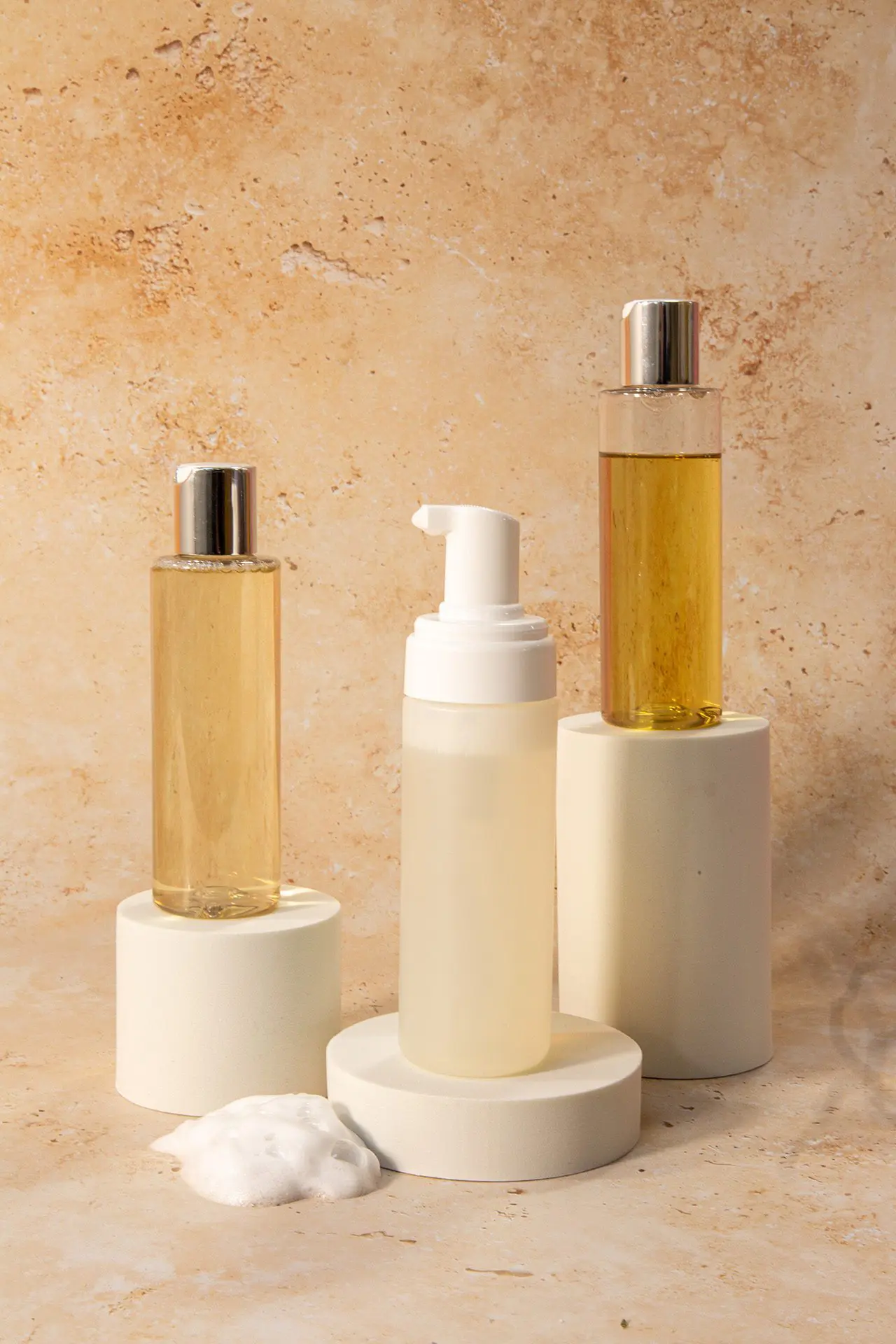
What is a surfactant?
The word surfactant is a shorter term for surface active agent, which actually describes how it functions – it lowers the surface tension between two liquids, between a gas and a liquid or between a liquid and a solid.
To understand what interface surface tension means, imagine water and oil mixed together. They will not form a homogenous mixture and where the two liquids touch each other (interface) there will be certain tension, keeping the two liquids separate.
If surfactants are added to this mixture, they will lower the tension and allow water and oil to mix.
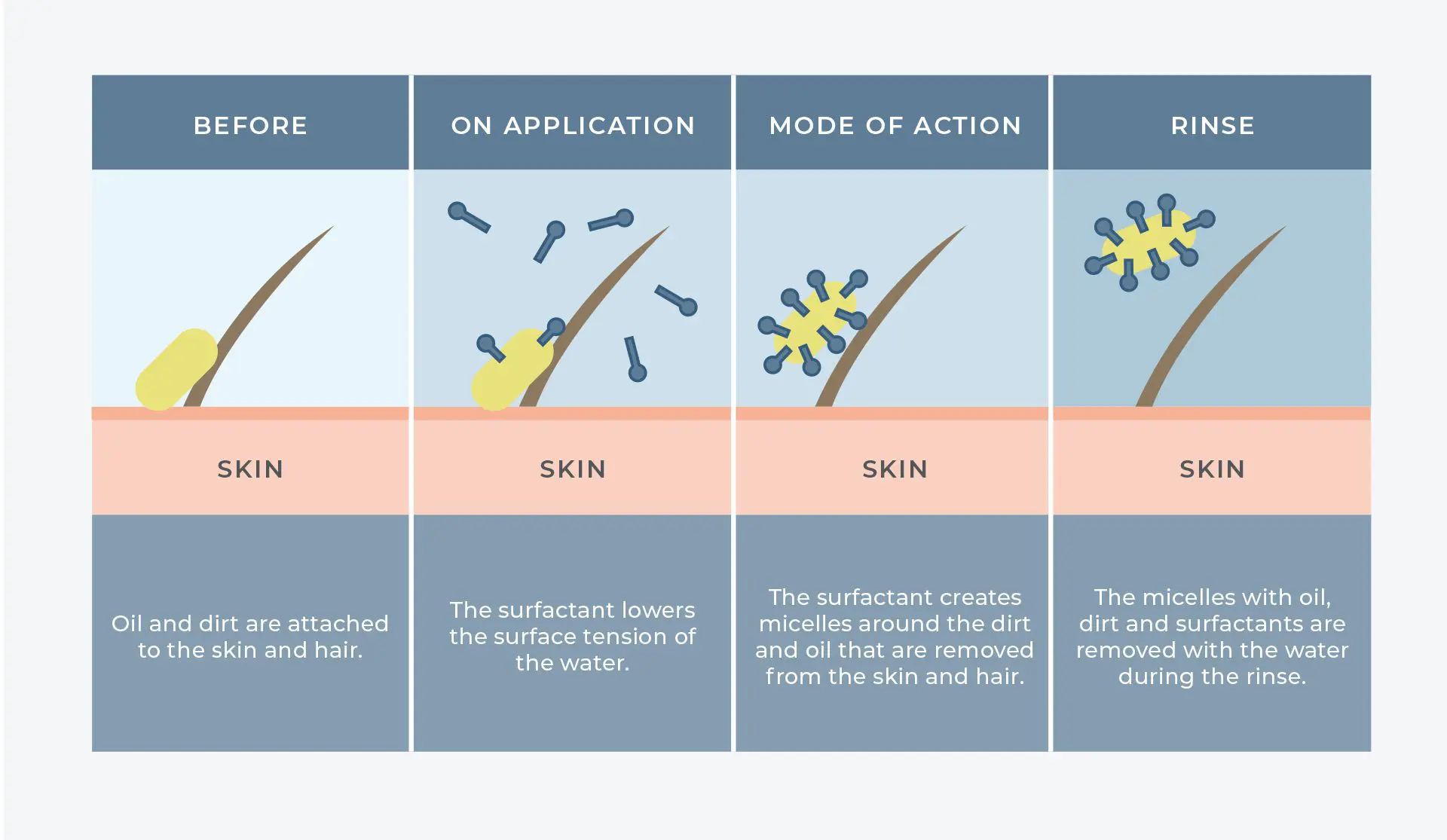
How surfactant-based cleansing products work
The face and body wash ingredients, especially the surfactants, surround and trap tiny droplets of fat (which also contains dirt and pollutants) and thus help to remove it from the skin by rinsing with water.
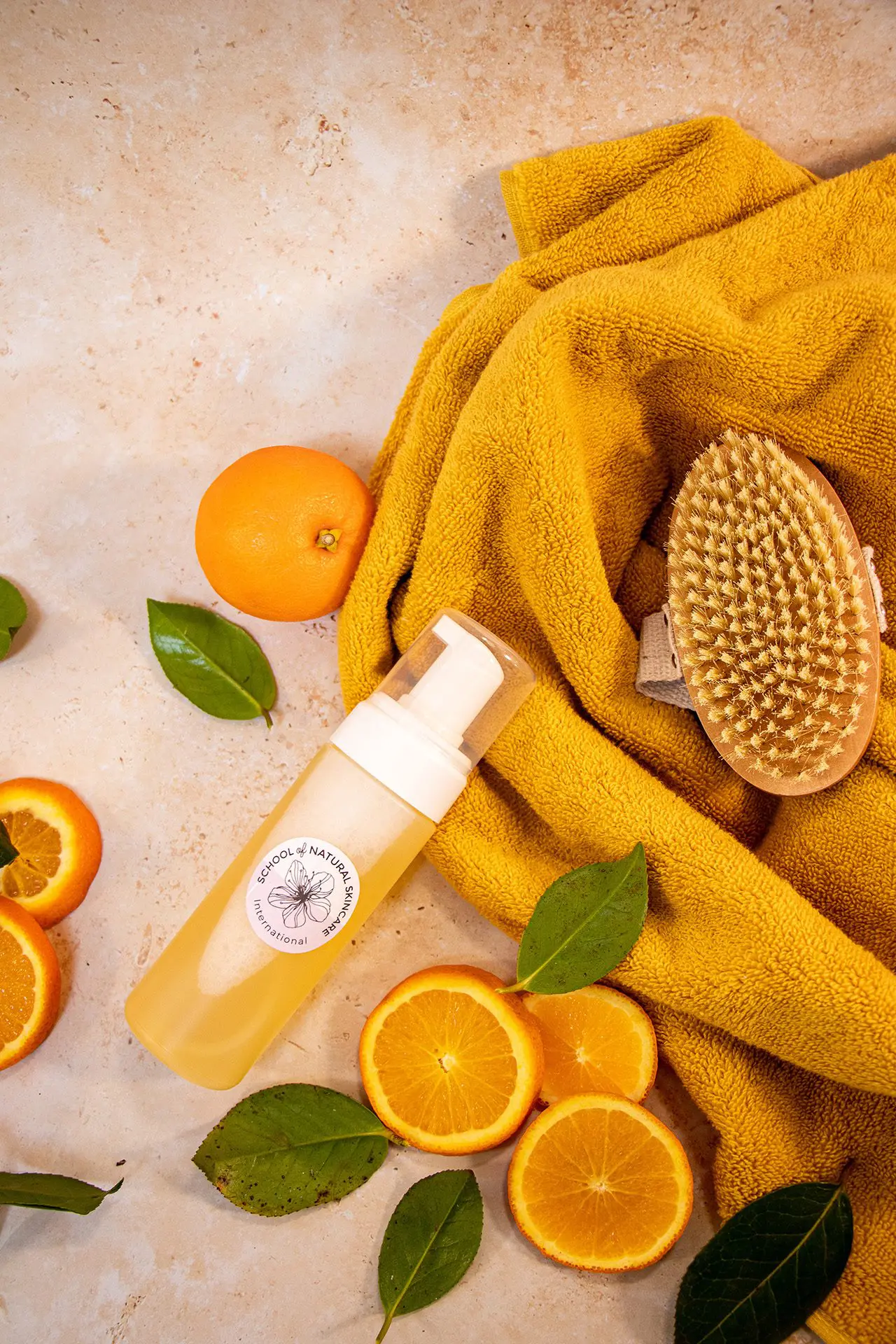
7 core functions of surfactants
Surfactants have lots of different functions but the main ones we will be focusing on are: wetting, foaming, dispersion, emulsification, detergency, solubilization and viscosity regulation.
- WETTING
This refers to how a liquid deposits onto a solid or liquid surface and how it spreads out. An example of this is how shampoo and conditioner spreads out onto the hair in order to carry out its function.
- FOAMING
Surfactants are used to create foam in products such as shampoo, and body, face and hand washes. Foam forms when gas is trapped inside so-called ‘cells’ with liquid film walls.
- DISPERSION
This is normally a powder (solid) dispersed in a liquid. A surfactant reduces interfacial tension and helps effective dispersion.
- EMULSIFICATION
Emulsification is the formation of a dispersed system made of two immiscible liquids (eg oil and water), where one is dispersed within the other in the form of small droplets.
The surfactant is positioned at the oil and water interface, lowering interfacial tension and preventing separation. This is how an emulsifier normally works to allow both oil and water phases to mix.
- DETERGENCY
Surfactants have the ability to remove dirt and grime from a surface. The hydrophilic (water-loving) head is attracted to the water and the lipophilic (oil-loving) tail is attracted to the oil in the dirt and grime.
These opposing forces loosen the dirt and grime on the surface, eventually suspending it in the water that washes it away.
This mechanism is used when we wash our clothes with detergent and when we use shampoo on our hair. Detergency is the function of surfactants that plays a key role in the cleansing action of face and body washes.
Notice how foam and detergency are two separate functions of surfactants?
High foam does not necessarily mean high detergency, and vice versa. It is only our perception that a product must foam in order to clean well. There are surfactants that do a very good job of cleaning, yet do not produce much foam; these are mainly natural surfactants.
In order to satisfy customers’ expectations of foaming body washes, surfactants that create good foam can be incorporated into a formula. On the other hand, a less foaming formula is usually perceived as more gentle and nourishing, which can also be used to your advantage.
- SOLUBILIZATION
Solubilization is the process by which insoluble materials are made water soluble by their encapsulation within micelles.
Solubilization is required when you want a clear formula but still want to blend oil in a mostly water formula. There are surfactants, fortunately, that can create particles so small that light can pass through them. This allows the solutions to remain clear.
Use of solubilizing surfactants is required when adding essential oils or fragrance oils to a water-based product. For solubilization to occur, oil and surfactant ratios must be at the optimum level.
- VISCOSITY REGULATION
Surfactants also have the possibility to change the viscosity of the formulation. Oils have quite a low viscosity, as does water. But when the two are mixed with the addition of a surfactant to create an emulsion, the viscosity is greatly increased.

Why formulate with natural surfactants?
1. Formulate a wide range of cleansing products – Learning about surfactants enables you to make a wide range of products including face, body and hand washes, foaming cleansers and shower foam, bubble bath and more!
2. Simple to make – Most surfactant-based products are easy to make; no complex manufacturing method is required.
3. Surfactants are versatile – With a small selection of surfactants you can formulate a wide range of products.
4. Cost effective – Many surfactants are relatively inexpensive to buy; therefore by making your own surfactant-based products you can save a lot of money compared to buying natural and organic products.
5. Formulate gentle products – Many commercial surfactant-based products are harsh and drying on the skin. Learn how to make yours gentle and non-drying.
6.Suitable for natural/organic certification – Formulate to natural and organic standards.
7. Expand your skincare range – Take all five modules of Formulating with Natural Surfactants and you’ll have the knowledge to add a variety of cleansing products to your skincare range.
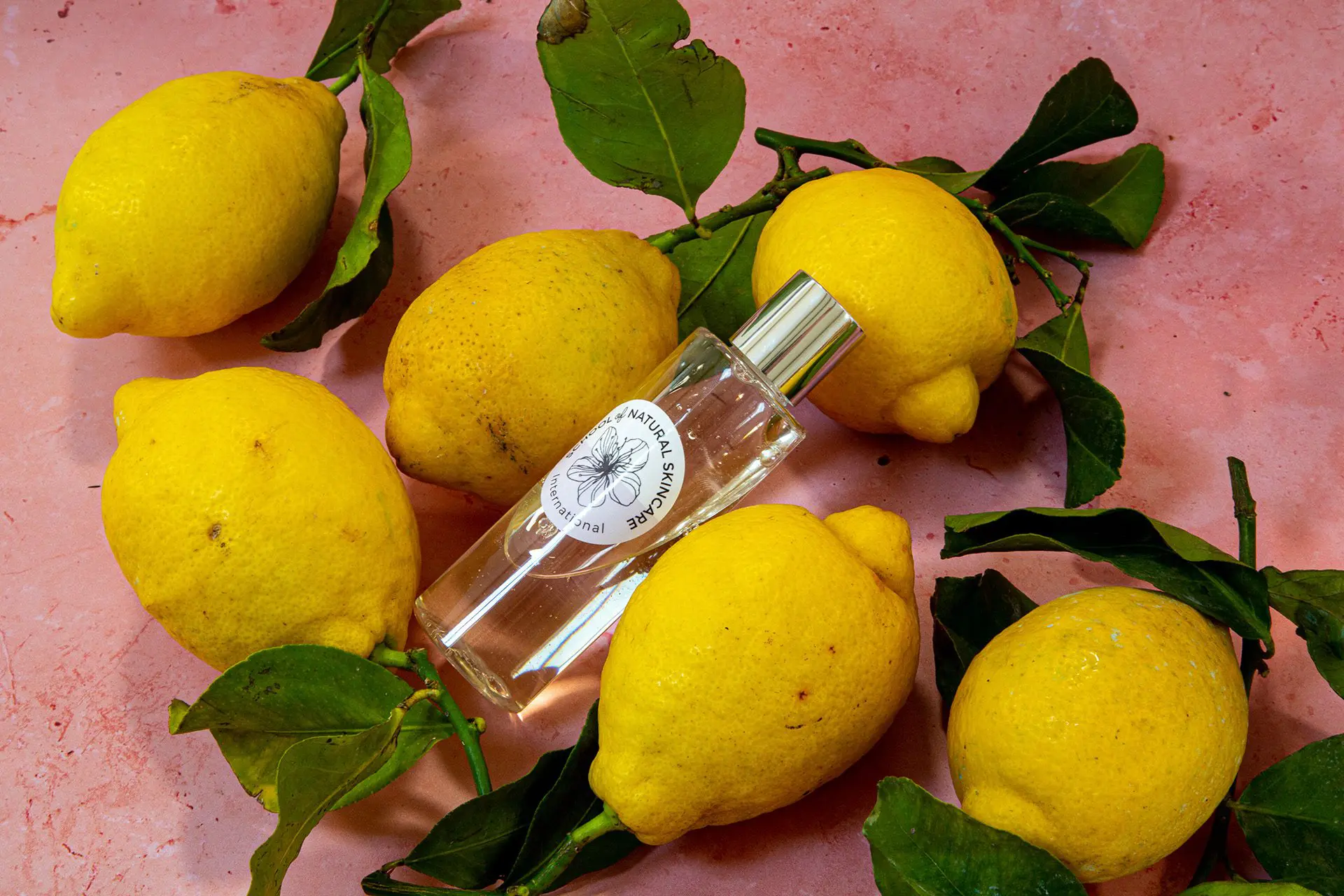
Can you formulate surfactant-based cosmetic products at home?
In short, yes you can!
As you will probably notice from this article, there is a bit of science involved, but don’t let that put you off.
Surfactants are a wonderful category of cosmetic ingredient to discover.
They add cleansing and foaming properties to a formula and are therefore used to create a wide range of products including face washes, body washes, shower gel, hand wash, bubble bath, shower foam and foaming cleansers.
Once you’ve grasped the fundamentals of surfactants – what they are, how they work, and how to formulate with them – making your own foaming cleansing products is a truly fun thing to be able to do.
Take our Formulating with Natural Surfactants course to learn the science of surfactants, discover a selection of gentle, natural surfactant choices (so you can avoid harsh surfactants such as SLS) and formulate a wide range of cleansing and foaming skincare products that are natural, mild and effective.
You can access this online course by being a Member of the Natural Cosmetic Formulation Club. To find out more about the Club, click here
Loved reading about surfactants? Make sure to remember this article by pinning it!
